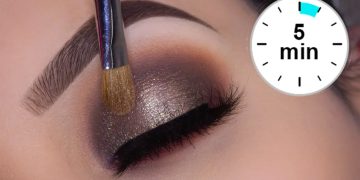Introduction
In an age dominated by rapid technological advancements and dwindling attention spans, the debate between short articles versus lengthy ones has become increasingly relevant. With the rise of content consumption on mobile devices and social media, readers often seek quick, digestible pieces that deliver value without overwhelming them. But does brevity truly win over depth? In this article, we’ll explore whether short articles are more effective than lengthy ones, diving into the psychology of reading habits, the impact on engagement, SEO (Search Engine Optimization), and ultimately, the question of which is more valuable to both readers and creators.
The Psychology of Reading Habits
Attention Span in the Digital Age
In recent years, studies have shown that the average human attention span has shortened significantly. According to a report by Microsoft, the human attention span has dropped from 12 seconds in 2000 to just 8 seconds in 2015—less than that of a goldfish. With the continuous influx of information online, readers often skim through articles or abandon them halfway, especially when faced with long blocks of text.
Shorter articles align with these diminishing attention spans, offering immediate gratification. Readers can consume the content quickly and move on to the next. However, the effectiveness of this quick consumption largely depends on how well the information is structured and presented. Short articles that fail to hook readers or provide enough value will likely lead to disengagement.
Engagement Through Brevity
Brevity, when done correctly, can lead to heightened engagement. According to a study by HubSpot, articles under 1,000 words tend to generate more social shares than longer pieces. People are more likely to share concise, punchy content that provides clear insights or entertainment. This is particularly relevant in an era where virality on platforms like Twitter, Facebook, and Instagram often relies on bite-sized, easily digestible content.
Moreover, the trend of visual content consumption—memes, infographics, videos—has made people accustomed to receiving information in short bursts. As such, a brief but engaging article can be more effective in maintaining reader interest and stimulating action, whether it’s sharing, commenting, or making a purchase.

SEO and Readability: Short vs. Long Articles
When it comes to search engine optimization (SEO), both short and long articles have their advantages, but for different reasons.
Short Articles and SEO
Short articles, when optimized correctly, can rank well on search engines. The key lies in using the right keywords, providing high-quality information, and ensuring that the article is well-structured. While shorter content typically has fewer opportunities to rank for a wide variety of long-tail keywords, a concise, well-written piece can quickly answer specific user queries, leading to high click-through rates (CTR) and a reduction in bounce rates.
Moreover, Google’s focus on user intent and experience means that articles that directly answer questions in a succinct manner are more likely to rank higher. For example, a listicle or a quick how-to guide (often under 800 words) can be extremely effective for answering common questions in your niche.
Long Articles and SEO
On the other hand, lengthy articles—especially those exceeding 1,500 to 2,000 words—tend to be favored by search engines for their comprehensive nature. These pieces have the space to cover a broad range of keywords, provide in-depth insights, and include more internal and external links, which Google and other search engines consider valuable for ranking.
Long-form content also has higher chances of attracting backlinks, another important ranking factor. If a lengthy article provides exceptional value, it is more likely to be referenced by other websites or blogs. For instance, an in-depth guide on “How to Improve SEO” will likely get referenced and shared more than a 500-word blog post on the same topic, simply because it offers a thorough explanation and more actionable advice.
The Hybrid Approach: Combining Short and Long
Many successful blogs and websites use a hybrid strategy—short articles that link to more comprehensive, long-form content. For example, a short blog post on the “Top 5 SEO Tips” may provide a brief overview, with links to a detailed, 2,000-word article that elaborates on each of the tips. This approach caters to readers who prefer quick information but also offers those who want more depth an opportunity to dive deeper.
Content Value: Quality Over Quantity
The real debate often boils down to quality versus quantity. A short article can be highly effective if it delivers exactly what the reader is looking for—clear, concise, and actionable information. However, a long article can provide significant value if it thoroughly explores a topic, addresses potential questions, and offers deep insights.
The key to an article’s success isn’t necessarily its length but its ability to meet the needs of the audience. For instance, if a reader wants a quick solution to a problem, a short article or guide might be perfect. However, if the topic requires detailed explanation, examples, or a step-by-step approach, a longer piece is likely to be more useful.
Reader Experience: What Do They Prefer?
It’s essential to consider the preferences of your target audience. Younger readers, often accustomed to fast consumption via social media, may lean toward shorter, more digestible pieces. In contrast, professionals and industry experts may appreciate long-form content that provides in-depth analysis, data, and research.
When it comes to the balance of short and long articles, the most effective strategy is one that recognizes the intent behind the reader’s search. Are they looking for a quick solution? Are they seeking a comprehensive guide? Understanding this will help tailor content to fit their needs.
Social Media and Short Articles
With social media platforms being the primary distribution channels for many pieces of content, short articles often reign supreme. Platforms like Twitter, Facebook, and LinkedIn reward brevity. Twitter, for example, allows only 280 characters per post, making short, punchy headlines and short articles the most likely to succeed. A brief article can be easily shared with a single click, and its content can be distilled into a quote or key takeaway that can be repurposed across multiple platforms.
Moreover, short articles are more likely to be read entirely, as they do not overwhelm the reader. In contrast, long-form content might face a higher dropout rate, especially on platforms where attention spans are notoriously short.

Interactive and Visual Content in Short Articles
Another advantage of shorter content is its ability to incorporate multimedia elements that engage readers. Short articles lend themselves well to the integration of images, videos, infographics, and interactive elements. These visual aids not only make the content more appealing but also improve retention and understanding.
The Long-Term Value of Long Articles
While short articles may be quick to produce and consume, long articles provide lasting value. In-depth content tends to remain relevant for a longer period, especially when it is well-researched and covers evergreen topics. Over time, long articles can accumulate backlinks, comments, and shares, giving them continued visibility and relevance.
For example, a comprehensive “ultimate guide” to a particular topic might not generate huge traffic immediately, but it will likely attract traffic over time as people discover it through search engines or backlinks. This longevity can make long articles more valuable in the long run, even though they may initially seem less effective than their shorter counterparts.
Conclusion: Which Is More Effective?
Ultimately, the effectiveness of short articles versus lengthy ones depends on the specific context in which they are used. Both types of content have their strengths and weaknesses, and the choice should depend on factors like the target audience, the platform, and the goal of the article.
Short articles are ideal for quick, concise information and are particularly effective in environments where readers are looking for fast, actionable content. They work well for viral content, social media sharing, and SEO when optimized properly. On the other hand, long articles are better suited for comprehensive, in-depth exploration of a topic, offering substantial value and long-term SEO benefits.
The most effective content strategy often involves a mix of both: short articles for quick engagement and long articles for sustained impact and authority. Ultimately, the key to success lies in understanding the needs of your audience and delivering content that resonates with them, whether it’s brief or long.


















































